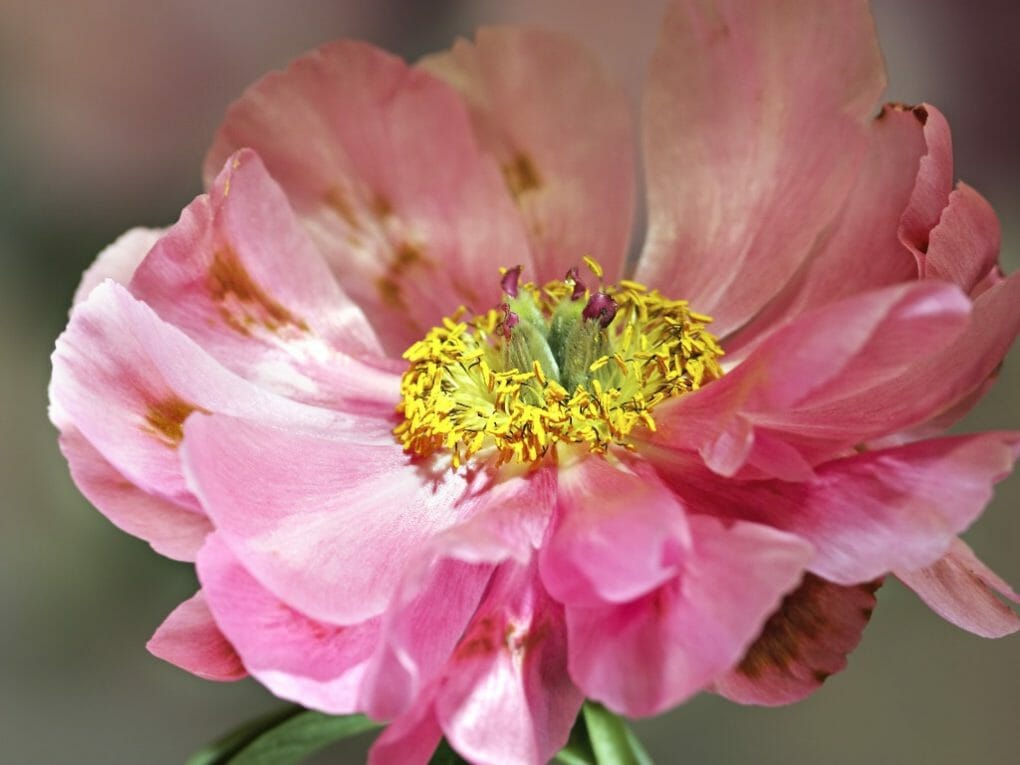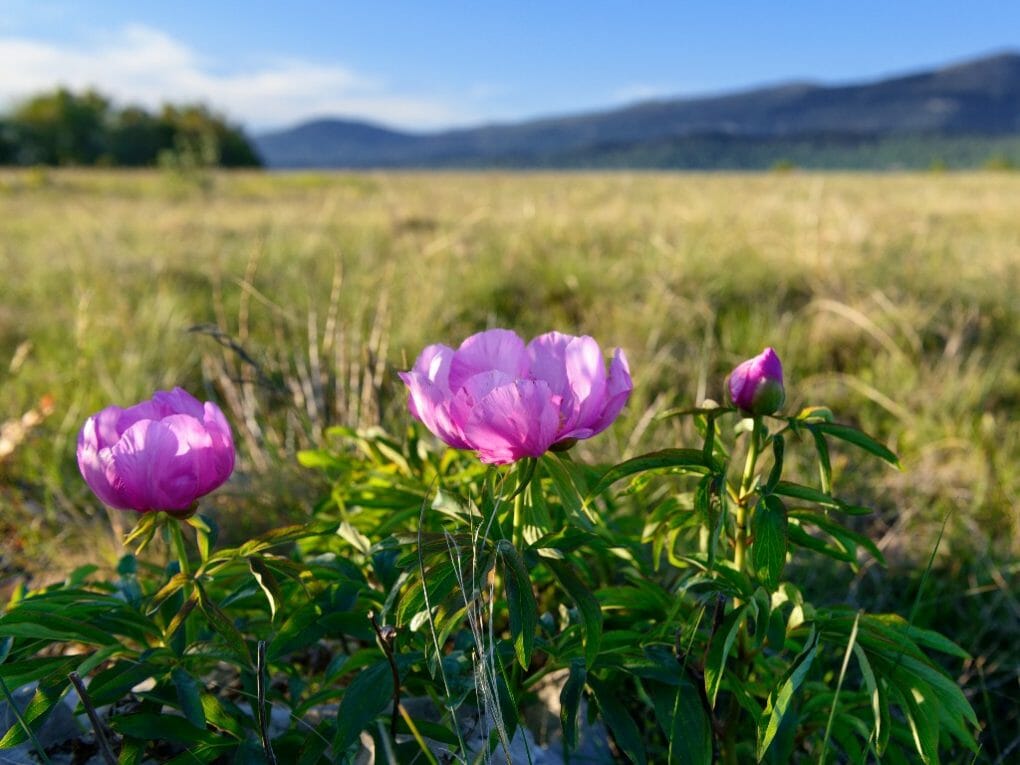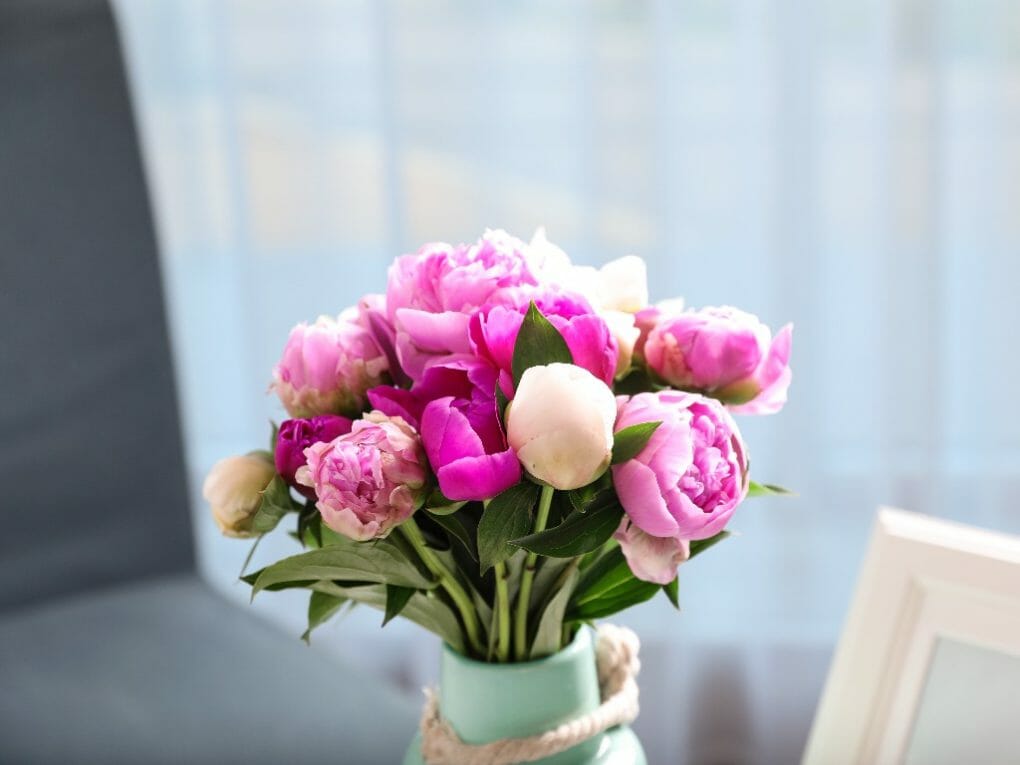How To Collect Peony Seeds? Harvesting and Planting the Peony Seeds

The first step in getting peony seeds is to pick the pods when they turn brown. The seeds are ready when dark blue, brown, or black. Unripe seeds are easy to spot because they are yellow. After you pick them, quickly break them right at the top and put them in a bag. At first, they are green, but as they ripen, they turn browner and browner and eventually split open. The best time to get the seeds is just before they split open.
Peonies are flowers whose seeds need time to grow. Peonies come in different species, hybrids, and cultivars.
The parts of the seeds are very big. It takes about two months for them to be ready. The shapes are different, and you can see them as soon as you get out of the pod. If you know what the seeds look like, it’s easy to get them from peonies.
If you’ve never planted peony seeds, it’s not a bad idea to wait until they finally open. The seeds don’t fall off very quickly, and most peony seeds can stay in the pod for weeks. When the pod is open, picking up the seeds is easy, so you don’t lose any.
Table of Contents
Facts About Harvesting Peony Seeds
Plant Peony plants produced from seed will not develop into their true forms. The only way to make authentic clones of peony cultivars is by the process of asexual propagation, which can take the form of cuttings or divisions. Peonies can be propagated from seed that has been harvested, and this can result in the production of distinct bloom variants. Herbaceous perennials need anywhere from five to six years to fully mature. When planted from seed, Tree and Itoh peonies will mature at a considerably younger age.
At what point should peony seed pods be removed from the plant? The harvesting of peony seed pods often takes place in the autumn. They are ready to be picked when the seed pods have turned dark brown, become leathery, and opened up slightly. Before the mature seed pods split open, secure nylon or small mesh bags around them using string so that you do not lose any seeds to animals such as birds, small mammals, or the elements. After you have gathered the peony seeds, you should evaluate the vitality of the seeds by placing them in a dish of water. The floating debris is sterile and should be thrown away. The viable seeds that sink should be washed with 10% bleach to kill any remaining bacteria.
Planting Peony Seeds
Outdoor Procedure

As soon as the seeds are ready, use them. Set up a place for a nursery bed in your garden. Plant the peony seeds the same way you would plant bean seeds. Put a label on a marker to show where the area is.
The method done outside isn’t as precise and may take longer, but it usually gives the best results. After you gather your seeds, put them in water for three to four days. Every day, change the water. Seeds that aren’t healthy will float, sink, and get soft. Healthy seeds will grow and stay round and firm.
Get the healthy seeds in a flat of Black Gold Natural and Organic Potting Mix, 1.5 inches deep and 3 inches apart. It has peat and composted bark, a good mix for peony seedlings. To keep track of their growth, count the seeds and write down where they are. Also, write the name, planting date, and other important information on the flat. Put the flat in a safe place with some shade. Keep it moist during the warm days of fall. At the end of the season, cover the top of the flat with plastic wrap and leave it there all winter. In early spring, remove the plastic and keep the flat moist throughout spring. The seeds should start to grow between the middle and end of spring. As soon as their second (true) leaves come out, feed them lightly with a water-soluble, all-purpose fertilizer. Once they are a few inches tall, you can move them to pots or a good soil spot in the garden. As they grow, you will have to take care of them. It might be smart to protect them with chicken wire or plastic collars. Snails and slugs should also stay away if you put diatomaceous earth around them.
Not all seeds will grow in the first year. If this is the case, leave the flat where it is, keep it moist all summer, and repeat the stratification process in the fall and winter. Most seeds will send up a shoot in the spring and summer.
When seeds are planted outside in early fall, they get the warm, moist treatment they need, followed by the cold treatment of winter and the warm treatment of spring. The indoor treatment is a copy of this sequence.
Indoor Procedure

Around the beginning of October, put moist potting soil in 4-6 inches-tall pots. Plant the seeds about four centimeters apart and about two and a half centimeters deep. You can spray the soil with a fungicide (like “No-damp”) or treat the seeds with a little “bulb” dust if you want to. Most of the time, rotting isn’t a problem.
Put the pots in plastic bags made for storing food. Place in a warm place (above 20°C) and leave for about three months. During this time, both the radicle and the root system will grow. Soil can be carefully removed to check on the little plants from time to time without hurting them. Just add more dirt and put the bags back together.
When the sprouts and roots are big enough, put the pots in a cold place just above freezing. This is a great use for the old fridge in the basement. Leave in the cold for two, three, or four months.
Choose a nursery bed spot in the garden. Carefully remove the soil and seedlings from the pot and replant them at the same depth. Add a plant marker with information about the seedling. Keep the soil moist (mulch). During the summer, the first leaves will show up. Some seedlings might not grow leaves until the following spring. Leave the little plants alone until August or September of the following year. The second layer of mulch will help them stay alive through the winter. Plants should be 1 foot apart and the same depth. The roots of peonies look a bit like the rough roots of carrots.
You might get a few flowers the next year (3rd year). In years 4 and 5, you can expect to see a lot of flowers.
What a pleasure, a thrill, and a sense of accomplishment to see the first peony flower from a plant you grew yourself. Flowers that no one in the whole world has ever seen!
